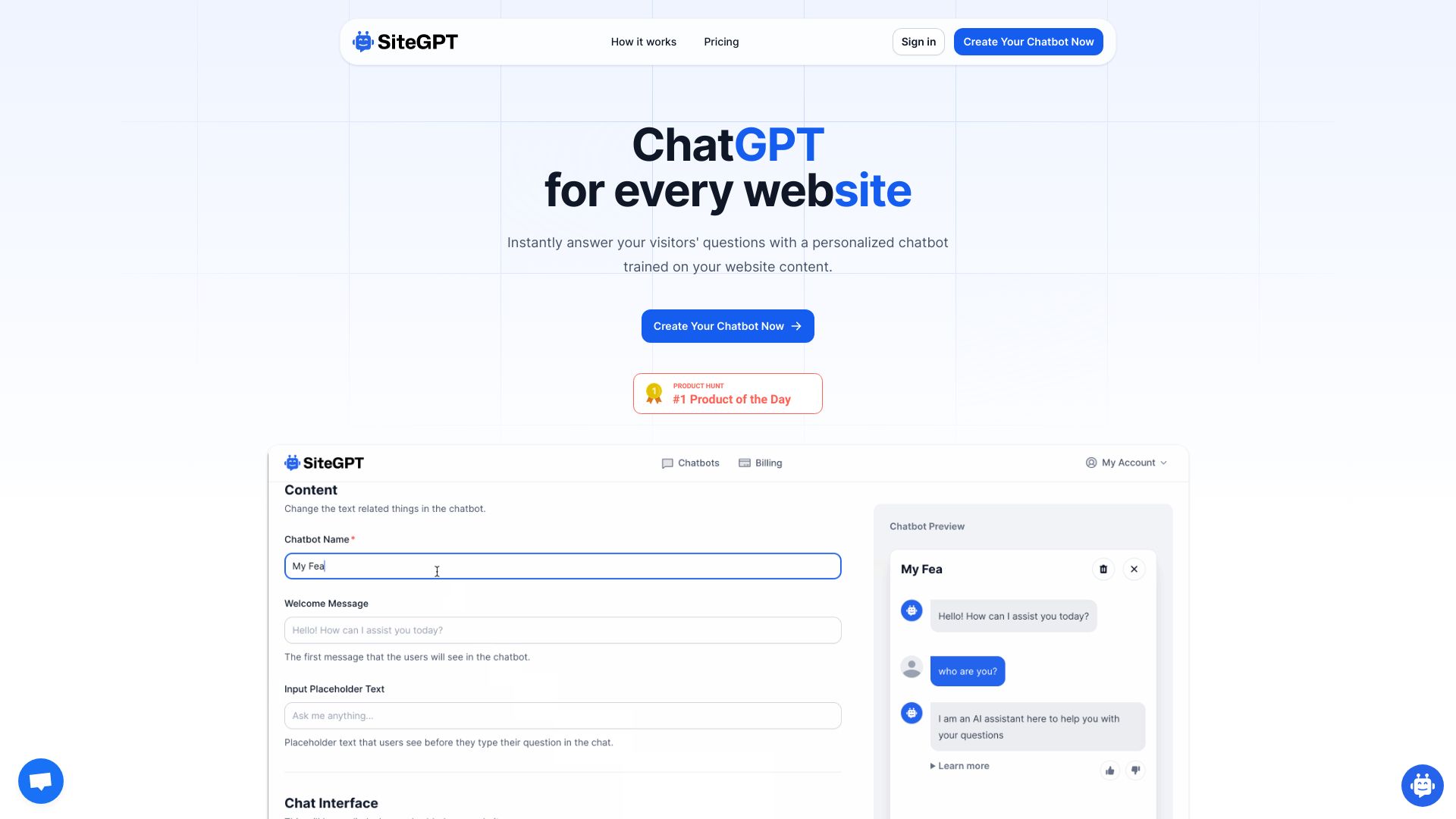- Home
- No-Code&Low-Code
- SiteGPT

SiteGPT
Open Website-
Tool Introduction:Create a website-trained AI support bot for instant answers.
-
Inclusion Date:Nov 01, 2025
-
Social Media & Email:
Tool Information
What is SiteGPT AI
SiteGPT AI is a platform for creating website-trained chatbots that answer visitor questions using your own content. Enter a URL, choose the pages to train on, and deploy a chat widget that delivers instant, context-aware answers from your docs, blog, FAQs, and product pages. The tool helps reduce repetitive support tickets, improve self-service, and guide users to the right information without delays. With a no-code workflow and fast setup, SiteGPT AI acts like an expert customer support agent available 24/7 on your website.
Main Features of SiteGPT AI
- URL-based training: Build a chatbot by entering your website URL and letting the system learn from selected pages.
- Page selection and control: Choose which pages to include or exclude so answers stay accurate and on-brand.
- Context-aware responses: The bot answers based on your published content, keeping replies consistent with your site.
- No-code deployment: Add a lightweight chat widget or bubble to your site with a simple embed.
- 24/7 self-service support: Provide instant answers any time, reducing wait times and repetitive tickets.
- Content-driven discoverability: Help visitors find relevant articles, documentation, and FAQs quickly.
Who Can Use SiteGPT AI
SiteGPT AI suits businesses and teams that want a website chatbot trained on their own content. Typical users include SaaS companies with documentation, e-commerce stores handling product questions, publishers and blogs improving content discovery, online course providers and educators, agencies managing multiple client sites, and startups that need scalable, consistent customer support without expanding headcount.
How to Use SiteGPT AI
- Sign up and create a new chatbot project.
- Enter your website URL to start content discovery.
- Select the pages or sections you want the bot to learn from.
- Review the knowledge base and adjust included pages if needed.
- Customize basic settings such as name, greeting, and tone.
- Embed the chat widget on your site using the provided script.
- Monitor conversations and refine included content over time.
SiteGPT AI Use Cases
Businesses use SiteGPT AI to power self-service help centers, guide users through product documentation, answer pre-sales questions on landing pages, assist shoppers with product details and policies, surface relevant blog posts to engaged readers, and support education portals with course, syllabus, and enrollment information drawn from official pages.
SiteGPT AI Pricing
SiteGPT AI typically offers multiple plan tiers that scale with usage and features. For current details on plans, limits, and any trials, refer to the official pricing information on the SiteGPT AI website.
Pros and Cons of SiteGPT AI
Pros:
- Fast, no-code setup from a website URL.
- Answers grounded in your own content for consistency.
- Reduces repetitive support requests and response times.
- Simple deployment via an embeddable chat widget.
- Available 24/7 to help visitors and customers.
Cons:
- Quality depends on the clarity and coverage of your site content.
- May require ongoing content updates to maintain accuracy.
- Not suited for account-specific or confidential inquiries.
FAQs about SiteGPT AI
-
How does SiteGPT AI work?
It trains on selected pages from your website and answers user questions by referencing that content, providing relevant, context-aware replies.
-
What content can it learn from?
You can include pages such as documentation, FAQs, product pages, and blog posts, then exclude sections that are not relevant.
-
Do I need coding skills to set it up?
No. Setup is no-code, and deployment uses a simple embed script to add the chat widget to your site.
-
Can I update the bot when my site changes?
Yes. Re-run training or refresh the included pages so the chatbot reflects your latest content.
-
Does it replace human support?
It handles common, content-based questions and reduces ticket volume, while complex or account-specific issues should still go to human agents.


